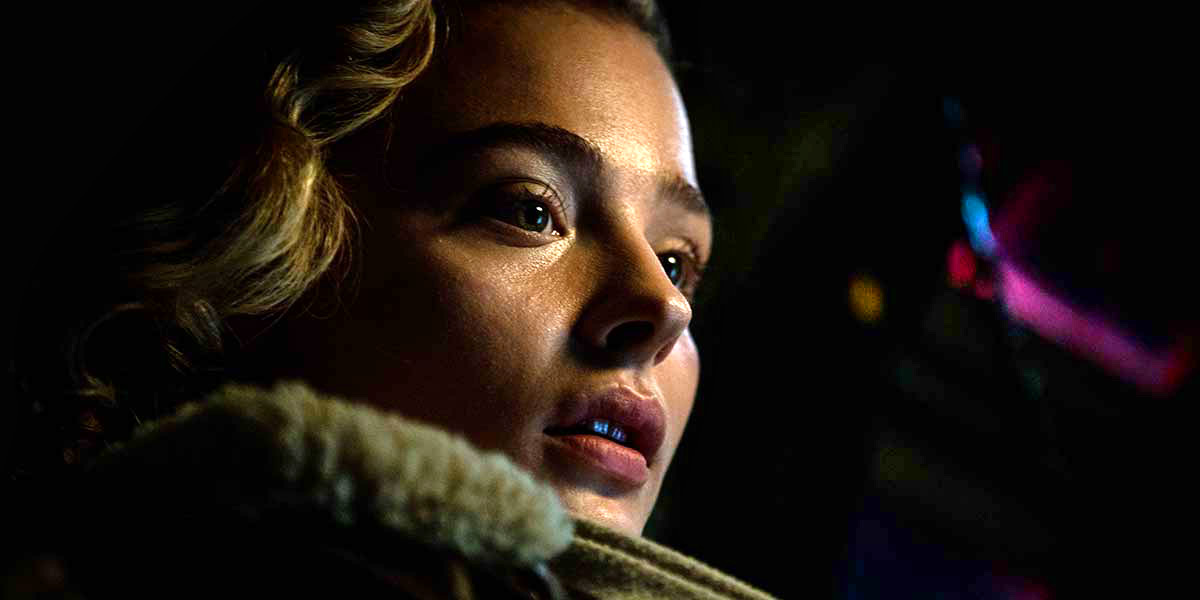Occasionally, in this line of work, you end up watching a movie bad enough to make you regret taking the assignment. Roseanne Liang‘s “Shadow In The Cloud” is a movie so bad, it made me regret choosing the profession. It’s one of those films that almost has to be seen to be believed; the production of any motion picture ultimately boils down to a series of choices, and “Shadow in the Cloud” is one of those rare films where every single decision, all the way down the line, was the wrong one. In that way, and that one way alone, it’s a bit of a miracle.
READ MORE: Toronto International Film Festival 2020 Preview: 15 Films To Watch
The first poor choice, of course, was producing a script by Max Landis, Hollywood’s favorite early-2010s enfant terrible who parlayed his last name and one (1) box office success into years of giant paychecks, even though his scripts were soul-crushingly terrible and his toxic behavior (including accusations of sexual and emotional abuse and physical assault) was an open secret. Considering what we know about how Max Landis treats women – to say nothing of his fondness for nonsensical critique of female protagonists – it’s either hilarious or chilling that he decided to make his comeback by penning a tale of a “strong female character.”
READ MORE: 2020 Fall Film Preview: 40 Most Anticipated Films To Watch
Said character is WWII flying ace Maude Garrett (Chloë Grace Moretz), whom we meet as she strides onto a B-17 Flying Fortress at Aukland Allied Air Force Base in New Zealand, circa August 1943. The plane is called “The Fool’s Errand,” and the specifics of Maude’s mission are confidential; one of her arms is in an unexplained sling, and the other carries a mysterious, but vitally important, case.
“Hey, is that an actual girl on board?” hoots one of the servicemen onboard, before they tuck her away into the ball turret – an enclosed artillery nest hanging from the belly of their B-17. She turns on the intercom and listens in on their graphic “locker room talk,” describing in detail what they’d like to do to her, and how; she’ll cure them of their sexism by the end, of course, with all her empowering bad-assery, but this is one uncomfortable scene to watch if you know anything at all about its writer.
Those cringes are nothing compared to the jaw-dropping turn the picture takes soon thereafter, as Maude peers out of her window and reports to the crew, breathlessly, “I have a visual of something on the other side of the starboard wing.” It seems there’s a creature on the wing of the plane, a gremlin of sorts, and yes, you’re reading this right, Max Landis ripped off the premise of a “Twilight Zone” episode that was recreated for his dad’s film adaptation. And look, if I were John Landis’s kid, the last thing I’d want to do is go around reminding people of “Twlight Zone: The Movie,” but hey, that’s just me, I guess I’m a different breed of cat.
I should note, for the record, that after Max Landis’s day of reckoning finally arrived, the filmmakers attempted to distance themselves from its originator; in a “Guardian” interview last year, Moretz insisted, “We’ve rewritten it several times now. His name is kind of far away from the project.” Which is both true and not; his name does not appear on the film’s IMDb page, but he’s the top-billed co-writer in the onscreen credits.
And the problem is that they can rewrite that script all they want, but it’s ultimately, unmistakably a Max Landis movie – like “Bright” or “American Ultra” or “Mr. Right,” it feels exactly like the result of one of those sweaty “[popular movie] meets [popular movie]” pitches in the opening of “The Player.” In this case, it’s “Wonder Woman” meets “Twilight Zone” meets “Aliens,” and the results are about as schizophrenic as that sounds. Never has a screenwriter made such hay of his narrative ADHD – it changes into a different film every 15 minutes, less like watching a movie than watching TV with a channel-surfer.
There is one very good idea here: following Maude into that gunner’s nest and staying with her, homing in on the claustrophobia of her confined space and working the angle of her isolation, as she (and the viewer) can hear but not see the men on the other side of her door. But sticking with that gimmick throughout the running time would require more patience and ingenuity than Landis or co-writer/director Liang could muster, so they lather on boneheaded plot twists, shoddy action sequences, and even, God help us, a teary, Oscar-clip confessional monologue.
It would be lovely to say that Liang manages to overcome the inherent flaws in the material, but she does not. The special effects are video-game level, the performances are barely directed at all (the less we talk about Moretz’s dodgy accent, the better), and composer Mahuia Bridgman-Cooper scores the whole thing with a bafflingly incongruent ‘80s thriller-style synth score. Again, every choice is the wrong choice.
By the time Liang trots out real historical footage of WWII servicewomen to play, alongside an inspiring pop anthem, during the end credits, “Shadow in the Cloud” has veered into self-parody; it’s like a fake movie in a Judd Apatow movie, an illustration of the crassness of mainstream filmmaking and the double-standards of those who make a very good living at it. This is an excruciatingly stupid movie, and the nicest thing I can say about it is that, at 83 minutes, at least it’s over quickly. [D-]
Follow along here for all our coverage of the 2020 Toronto International Film Festival.





